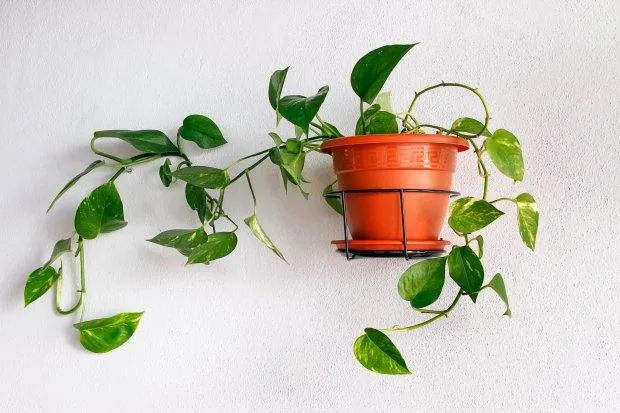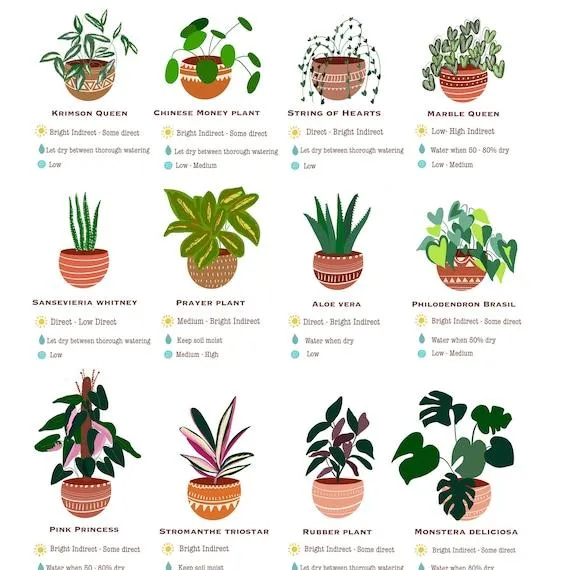A Beginner’s Guide to Keeping Indoor Plants
Thinking of bringing the outdoors in by starting an indoor plant collection but not sure where to begin? You’re not alone. Keeping plants inside can seem intimidating at first, but it’s actually quite easy once you know the basics. In this guide, I’ll cover everything from choosing the right plants for beginners to caring for them so they thrive. By the end, you’ll be well on your way to becoming a plant parent.
Picking Plants
The first step is selecting plants that are well-suited to indoor conditions. Here are some top choices for new plant owners:
- Pothos – One of the lowest maintenance plants, pothos is practically impossible to kill. It thrives in low to medium light.
- Snake plant – Known for being incredibly hardy, snake plants filter toxins from the air. They only need water every couple of weeks.
- ZZ plant – With its waxy dark green leaves, the ZZ plant is another great option for low-light spots. It can even go months between waterings.
- Peace lily – With white blooms that emerge when it’s time to water, peace lilies are good for beginners. Their leaves will droop if thirsty.
- Spider plant – Easy to propagate from plantlets on its stems, spider plants are beautiful and very forgiving.
While exception plants like orchids or prayer plants require more specialized care, the options above are pretty much foolproof for starters.
Picking a Spot
Where you place your new plant is also important. Most houseplants prefer:
- Bright, indirect sunlight – Direct sun through a window can scorch leaves, so east- or west-facing patios work well.
- Stable temperatures – Avoid hot spots by furnaces or drafty areas by doors/windows.
- Access to outlets – Consider grow lights if your home tends to be dark.
Remember, most plants are flexible as long as they get at least 4 hours of sunlight daily. Experiment until you find spots your green babies thrive in.

Potting and Soil
Proper pots and soil will set your plants up for success. Look for containers with drainage holes and use potting mixes specifically labeled as “indoor plant soil.” These are lighter and drain better than garden soils.
When repotting, make sure the plant’s root ball sits about an inch below the pot rim. Gently pack soil around the roots and tamp down, then water thoroughly to settle everything in. Repot yearly or when roots emerge from the drainage holes.
Watering
Underwatering is far more common than overwatering for beginners. The top 2 inches of soil should dry out between waterings. You can check by sticking your finger in the soil or lifting the pot.
Peace lilies, pothos, and spider plants especially will droop if thirsty so water when this happens. Snake plants and ZZs can go much longer. Always empty saucers beneath pots 30 minutes after watering to prevent root rot.
Feeding
While soil provides some nutrients initially, plants also need additional fertilizer, especially during their active growing season (spring to fall). I like to use a diluted liquid houseplant food about once a month, following label directions.

Pruning and Pests
Occasional pruning keeps plants bushy and encourages new growth. Just trim off leggy stems or branches with clean shears. Common houseplant pests include gnats, spiders mites, and mealybugs. Regular inspection and neem oil or insecticide sprays can prevent and treat issues.
Problems
Three of the biggest problems for new plant parents are overwatering, underwatering, and lack of light. Yellowing or brown spots on leaves often indicate too much or too little water. Drooping and pale leaves signal low light conditions.
As long as you select suitable plants to start, provide the proper care based on their needs, and pay attention to signs of stress, many problems can be avoided or solved easily. Having plants flourishing on your windowsills is extremely rewarding.
Propagation
As your collection grows, you’ll likely want to multiply your favorites to share or fill out your space even more. Many common houseplants can be propagated through leaf or stem cuttings set in water or soil. Pothos, spider plants, philodendrons, and more readily form new plantlets.
It’s fun and gratifying to nurture cuttings into full plants. Soon your skills will advance to where you can try more challenging varieties too. The options are endless once you have the basics down.

I hope this guide has given you a solid starting point to begin enjoying the benefits and joy that houseplants can bring. Feel free to experiment until you find what works best. Have fun pairing plants with your home’s décor too. With some trial and error, you’ll be an indoor plant pro in no time!
Tips for Choosing Houseplants for Beginners
| Plant | Light Needs | Watering | Notes |
|---|---|---|---|
| Pothos | Low to medium light | Allow soil to dry between waterings | Hardy and easy to care for |
| Snake plant | Low light | Water when soil is dry 1-2 inches deep | Very drought tolerant |
| Philodendron | Medium to bright indirect light | Water when top inch of soil is dry | Tolerates low light conditions |
| Chinese evergreen | Bright indirect light | Water when top inch of soil feels dry | Beautiful foliage, poisonous to pets |
| ZZ plant | Low to medium light | Allow soil to dry out between waterings | Very drought tolerant with lush foliage |
FAQ
-
What types of plants can grow inside a home?
Plants like peace lilies, pothos, snake plants, and spider plants are good choices for beginners since they don’t require lots of sunlight. English ivy and bamboo palm also do sort of okay in low-light indoor areas.
-
How can you tell if a plant needs more water?
The soil will become dry if a plant needs water. You can check the soil by putting your finger in it – if it feels dry about an inch down, it’s time to water. The leaves may also start to droop or look limp when a plant is thirsty. Overwatering can cause problems too, so only water when the soil is dry.
-
What kind of light do most indoor plants need?
Most houseplants thrive in medium to low indirect light. Putting plants near an east or west facing window provides adequate brightness throughout the day. Direct sun from a south window may be too intense, unless it’s only morning or late afternoon light. Try moving plants around – some may do better in a shadier spot.
-
How often should you repot plants?
As a general rule, repotting is necessary when a plant’s roots have completely filled the current pot. For slower-growing plants, this may be every couple years or so. Faster growers might need repotting annually. Signs that it’s time are if water drains quickly through the soil or if roots are poking out the drainage holes. Always repot in a container only slightly larger than the previous one.

-
What are some common pests that bother houseplants?
Two frequent suspects are spider mites, which can spin tiny webs on leaves, and scale insects, small bug-like creatures that attach to stems. Mealybugs also plague some plants – they look sort of like cotton balls. Keep an eye out for symptoms like spotting or yellow leaves. Applying neem oil or insecticidal soap every few weeks helps prevent infestations.
-
How can you revive a droopy plant?
A plant that suddenly looks limp may be wailing because it’s thirsty. Water it thoroughly until water drains out the bottom holes but don’t over-soak. Then move it to a brighter spot. Cutting off any brown crunchy pieces also diverts energy to newer growth. With adequate sun and water, most plants perk right up within a day or two. If super droopy, it could be a goner – toss it and start over.
-
Is it hard to care for plants?
Caring for houseplants is pretty effortless if you follow a few basic steps. Give them the right amount of light, water, and nutrients. Repot them when roots fill their containers. Keep an eye out for signs of pests or disease. It may take some trial and error to find plants that vibe with your environment. Overall, plants are amazingly low-maintenance – all they basically need is your love and care. With a little TLC, plants can add beauty and life to any indoor space.
